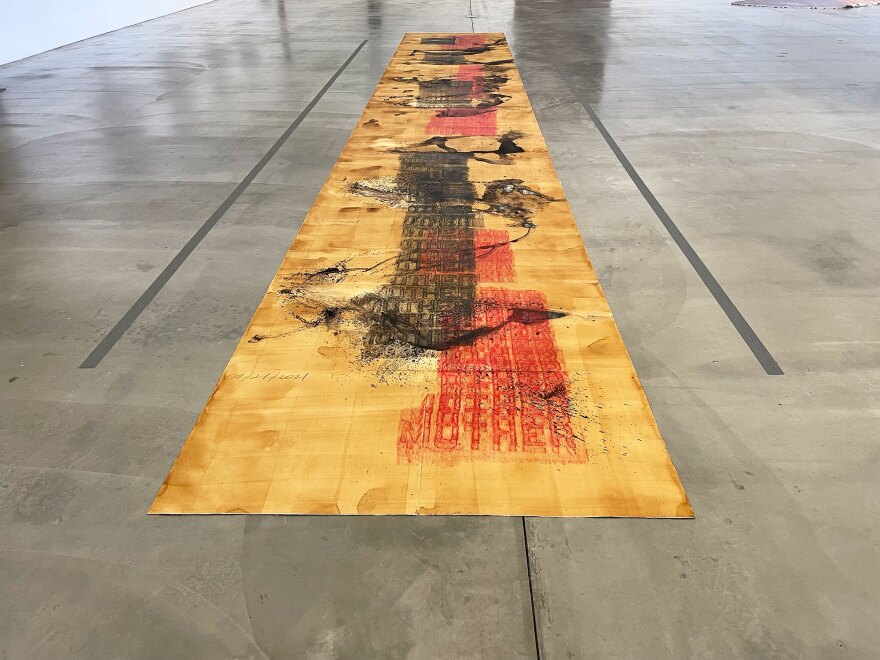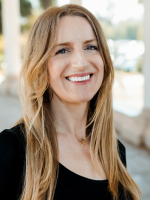It may not be the first thing you notice at the Museum of Contemporary Art San Diego's downtown location, but it will soon be the soundtrack: artist Carmen Argote's sometimes-breathless voice, looped in audio recordings taken on her iPhone.
The recordings log observations, as well as the beginnings and trajectories of art works.
"In those breathless moments, they're actually very genuine — she's on these very long walks, and something will kind of catch her attention and she'll say, 'Hey, Siri,'" said MCASD assistant curator Isabel Casso, who co-curated the exhibition with Jill Dawsey.
"Carmen is very interested in process art. But hearing the ways in which she got to the works on the wall or the works on the ground is very helpful," Casso said. "It does help give a throughline to many of the works in the exhibition."
The exhibition space — a single, large room — contains a collection of the Guadalajara-born, Los Angeles-based artist's recent works, each having begun as an observation or one of those "Hey, Siri" moments.
The works include sculptures, textile works, paintings and pieces made from found objects and trash.
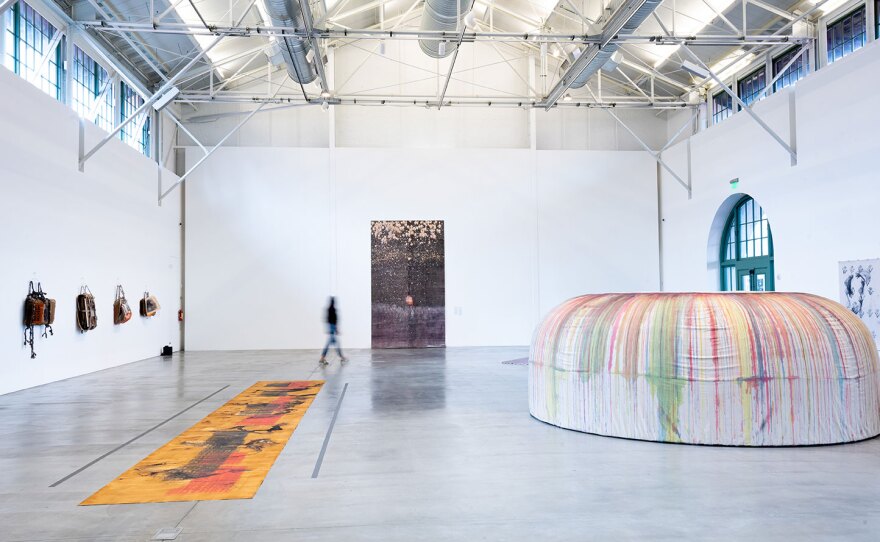
Based in process
"The conversation that really comes forward is a conversation about walking as a practice. Taking things in around us and transformation," Argote said.
The largest sculpture in the exhibition gives the exhibition its name: "Filtration System for a Process Based Practice," which is a mound shape covered in painted linen. It's modeled after a concrete filtration structure in a man-made lake in LA's Lincoln Park, where Argote often walks.
To Argote, it felt almost like an island, and she imagined herself climbing on top of it. In her studio, she could. In taking the inspiration from her walk into her art, she transforms the observation, the object, into something new.
One series, the "Cosmic Backpacks," are a set of constructions made of stacked, folded and molded pizza boxes, fashioned into backpacks and hung on the wall. Early in the pandemic, Argote walked around her neighborhood, collecting used pizza boxes from her neighbors' trash.
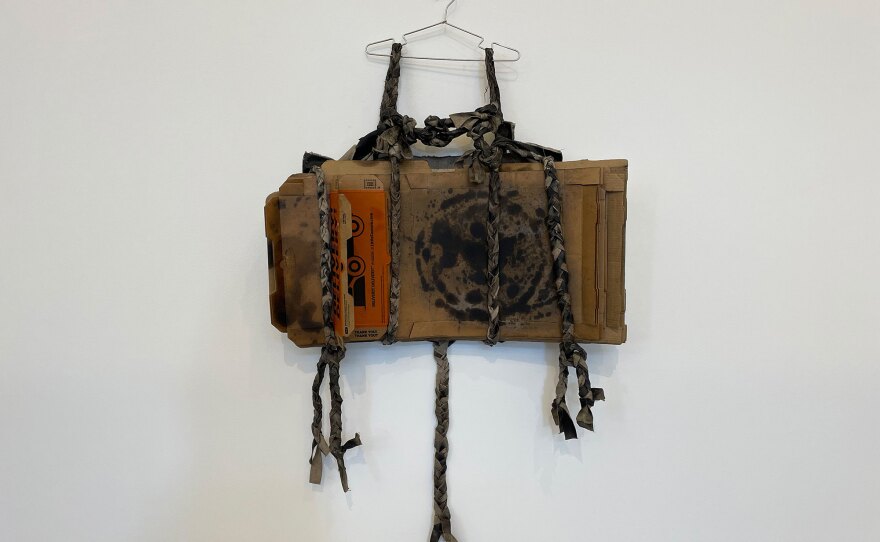
"And what was interesting to me was that these stains looked like a cosmic language. So then it was the action of almost like deciphering. What is it saying?," Argote said.
Alchemy in materials
Five hanging textile pocket works — all made in 2019 — spotlight the impact and interactions of the materials chosen. Long swaths of fabric hang on the wall, with various sizes and shapes of pockets sewn onto the front.
Argote mixed raw mineral oxide washes into various muted shades — pink, yellow, blue, green, purple — and poured the liquid into the pockets. The cloth pockets couldn't contain the liquid, so pigments streak down each piece.
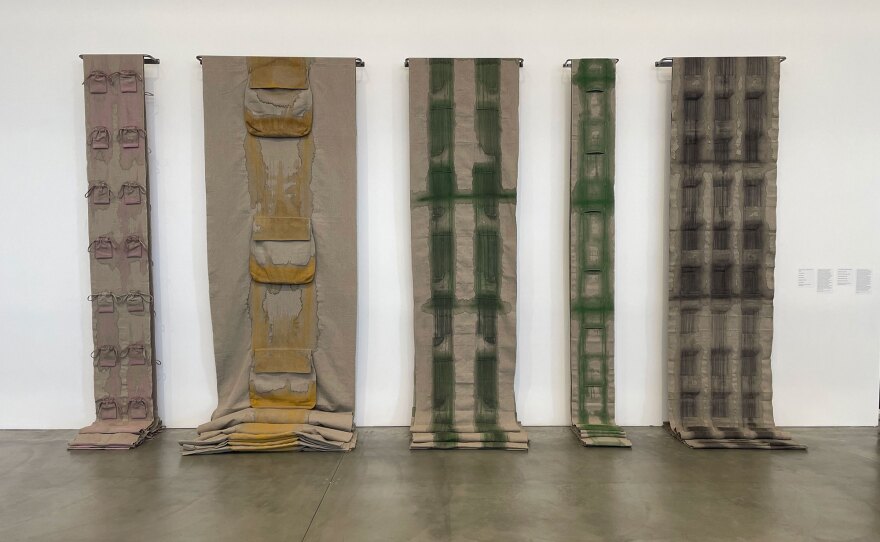
The pocket series is arguably a springboard for future works in the exhibition, where Argote uses more chemistry and oxidation in the materials she mixes in her works. The end aesthetic result depends on the ways the different components interact and react to each other.
"Her interest in filtration and alchemy, I think, also stems from her quite literal training as a ceramicist as an undergrad, but then has changed into understanding the ways in which the body filters life, filters any number of things," Casso said.
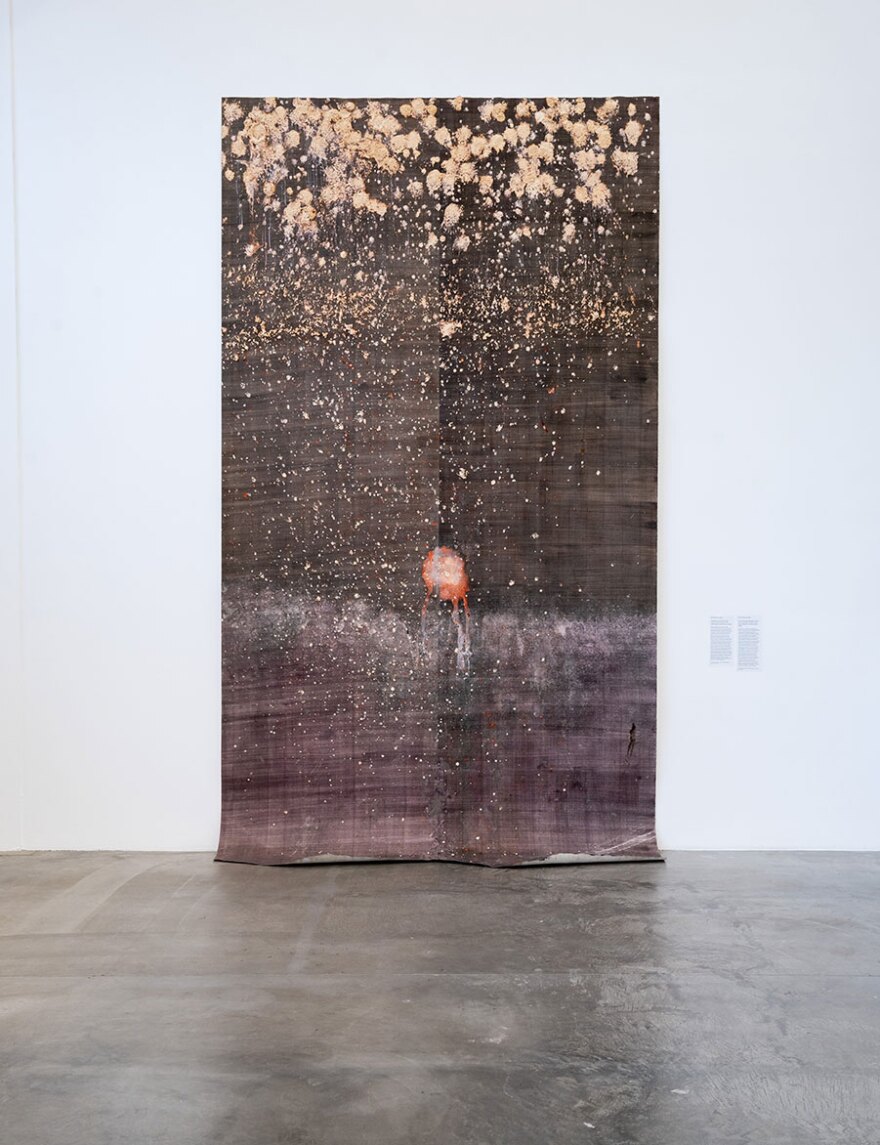
There's beauty, too.
"For Florence (2020)" is a 15 ft. tall work on paper. Cochineal, gel medium, wadded up toilet paper, lemon juice, duck droppings and lake water combine and almost mimic a night sky. A white line marks where the paper dipped into the lake and the pH changed — a sort of horizon.
Another large work, "Urine Map in Book Form," is a 30 foot long paper piece placed directly on the gallery floor. Using tannic acid dye, iron powder, crayon and her own urine, Argote repeated the word "MOTHER" — rubbings taken from nearby graves — along with mesmerizing bloom patterns where the liquids pooled, formed rivulets and reacted.
"Urine Map in Book Form" is an accumulation of the processes Argote explored in other works in this exhibition, but it also branches off into another body of work, called "Mother."
"I think something that really joined the works (in this exhibition) together is this idea of going from the body outward, from the self outward," Argote said. "Whereas, for example, 'Mother' as a body of work is from the body inward. So there's a fluctuation between the architecture of oneself that moves outward and then looks at the world, and then the other sort of vantage point or perspective of that is taking the architecture of the self and then going deeper into that."
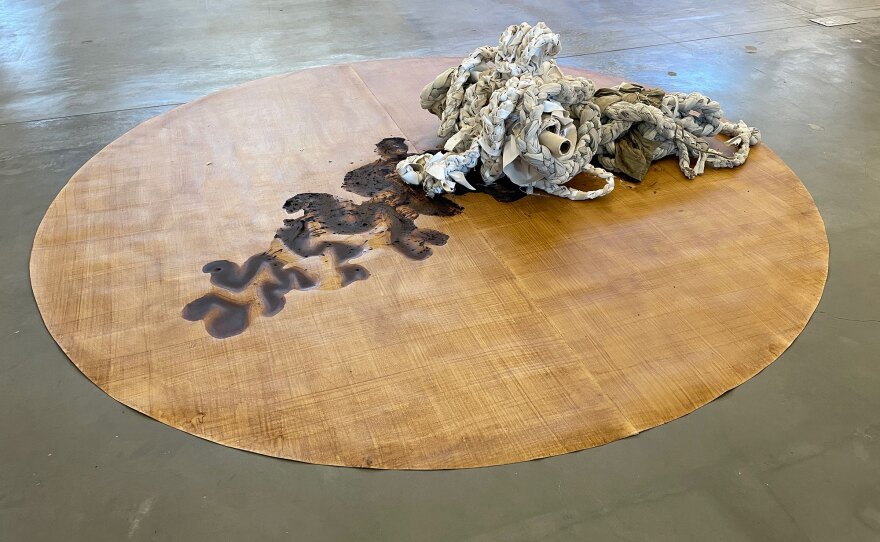
OK, about that urine
Early in the pandemic, the public restrooms closed along Argote's walking route during the pandemic. As she drank enough water to support her walks, she'd have nowhere to use the bathroom except for squatting nearby.
"It's just kind of the lessening of those boundaries and then also noticing, you know, there's a lot of people without housing, and there's no place for them to use the bathroom either," Argote said. "There was just a very bodily need."
In her work, it also became a ritual, and her own body became part of the art. She recognized her body as its own filtration system.
Pieces like "For Florence," "Urine Map in Book Form" and "I'm taking all I can carry" use the reactions between urine and other elements to create a distinct aesthetic pattern, but also to signify the striking processes and metamorphoses that materials and sources take on as they become something else, something beautiful.
Urine and its chemical reactions and splatter patterns have been used by artists before — most famously with Warhol's "Oxidation" series, known as his "Piss Paintings." But Argote noted that those were all very masculine, where the shock of it was the point.
For Argote, her relationship with the process is still inherently gestural, and her works undeniably are in conversation with Warhol's legacy, according to Casso.
"In another way, I think one of the other undercurrents through the show is all of these small acts of rebellion, even throwing toilet paper wads at the ceiling like you did in high school in a work like 'For Florence.' Or you have moments of public indiscretion like urinating, and these small things that collectively add to be something greater, which I think you can take it to be this really beautiful thing as a larger act of resistance," Casso said.
"Filtration System for a Process-Based Practice" is on view at MCASD's downtown campus through Oct. 23, 2022

